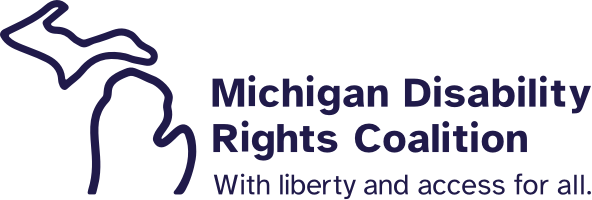The Role of Assistive Tech (AT) in Recovery from Domestic Violence: Part One
Friday, February 8, 2019
Introduction
Most of the focus of MDRC’s AT work in domestic violence involves assuring that people with disabilities who are assaulted are able to access existing resources to the same extent that anyone without a disability can. These resources include shelters, support of personal resource needs, support for personal and family safety, and effective use of law enforcement remedies. When full and flexible use of AT is available, it allows the personally customized use of all community resources by the person and family, so that people with disabilities can safely exercise their personal autonomy in the crisis.
But AT can also support people with disabilities through the recovery process from domestic violence, a process that is usually much longer than the resolution of the crisis triggered by a domestic violence instance. Recovery from domestic violence shares much with recovery in other circumstances, such as PTSD, natural and personal disasters, chronic pain, mental illness, addiction, the onset of chronic medical conditions, and other breakdowns of personal and social stability.
Viewed this way, recovery isn’t a passive process of restoring what existed before but is more like the use of the recovery process in mental illness and addiction communities. Most broadly, this kind of Recovery is the way people use their personal decision and social and community support systems to create a new way of living a life of freedom and choice. Such Recovery is focused on building personal control by creating ways to manage personal emotional and other symptoms, immediate and more distant barriers in the person’s environment, and social losses that are part of the trauma-caused breakdown in support. Recovery doesn’t distinguish between “inner” and “outer” barriers. All of these barriers can be goals for the creation of management skills by the person and family. As the saying goes, “Recovery is a Journey”, with no preset map.
AT chosen by the person and used to manage and support their Recovery Journey can be indispensable. Being able to find, understand, and effectively use AT in the Recovery Journey is essential for persons with disabilities as they build their new future. Because one of the barriers to Recovery is the loss of belief in the ability to control one’s future, this post will discuss some options rather than offer “solutions”. People choose a Journey of Recovery, and they choose the tools and methods that make the most sense to them in their current circumstances. There is no other way to truly recover.
AT for Assuring Personal and Family Safety:
There are a large number of personal safety apps out there. They have many different capabilities, and it is important that you think through what you want to be able to do, and whether the initiators, for the capabilities you need, fit your disability characteristics.
- bSafe: This app has a wide range of support capabilities. These include private messages to friends about your arrival at a destination, your changing GPS location, an audible alarm, automatic video capture. To make the most use of the app, your friends need to install it as well. But, one of the most important ways to maintain personal safety is an active social network with people you trust. The app is available on App Store and Google Play
- Red Panic Button: Press the Red button and you can (free version) Send Panic SMS, Send Panic Email, One Touch Panic via Widgets, Send panic tweet, Address in panic messages (Email, SMS, Tweet), Support for Pebble Smartwatch, Integration with Android Wear devices (watch app automatically installs on the smartwatch). Available for Android and iOS
There are many others available. There are a number of well-rated ones, with large user bases, that have been pulled from both Google Play Store and Apple Store recently. I assume this is for privacy issue violation since those issues are high profile right now. You might want to try one of those above, then check for other personal safety apps at Google Play and the Apple store in a few weeks. In a few weeks, I will do an update on personal safety apps and their availability and capabilities.
In Part Two, I’ll cover resources and AT for emotional and brain injury issues, social support resources, community resources, and AT to support your planning during recovery.

